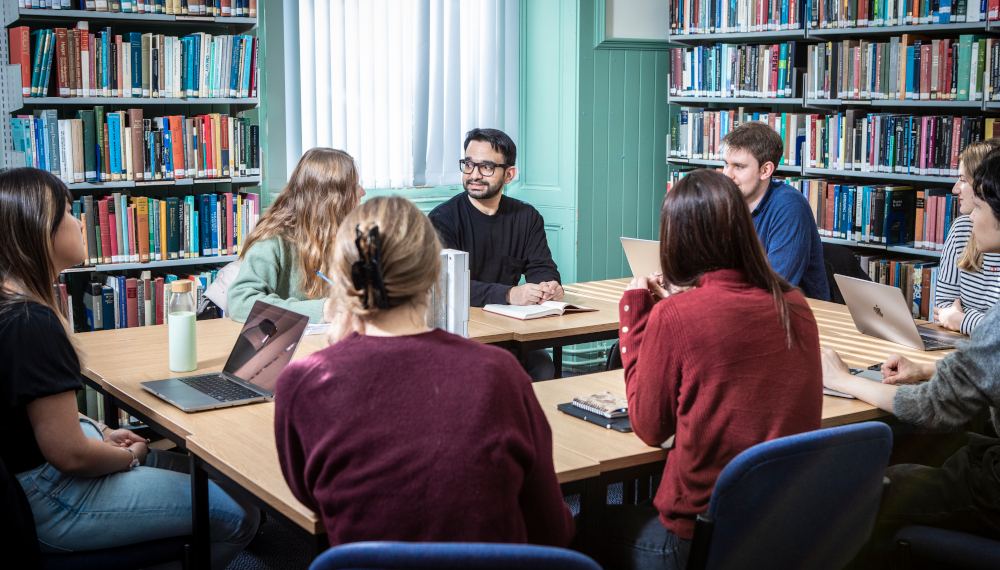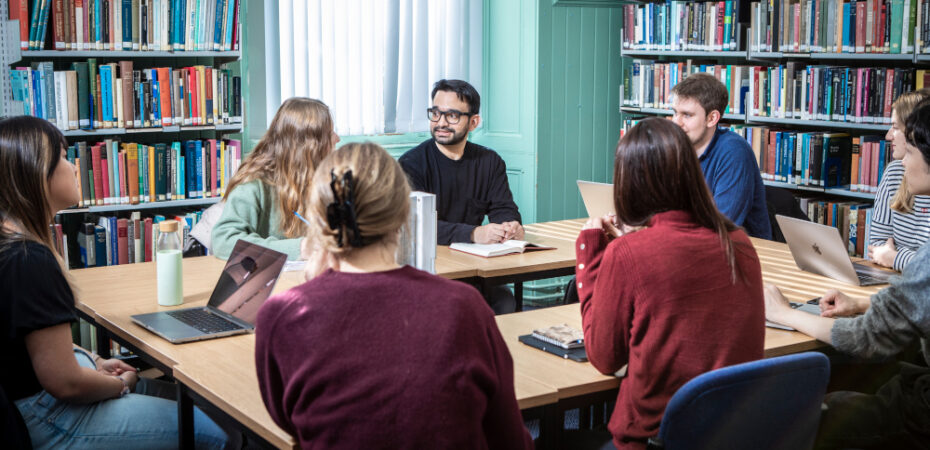
Hannah: I met Shirley at a College Education Committee meeting where I was invited to discuss the linguistic challenges faced by international students. As part of this discussion, I advocated for an inclusive approach to the embedding of academic language and literacies in the curriculum, highlighting that academic language is no one’s mother tongue and that we should provide support for all students to be successful. We continued the conservation from there.
Shirley: I’m a second-year international student studying History and Politics with a strong interest in the international student experience in higher education. I first met Hannah while serving on the College Education Committee, where her presentation on the gap between English qualifications and the real challenges of international student transition really resonated with me. It aligned with my work at SACHA, a student-led think tank, where I explored ways the university can improve communication and diversify support systems to better serve international students. After the meeting, I reached out, and we quickly realised our shared interests in bridging student and staff perspectives on these issues.
Our reflections on why international student transition is critical, and the challenges it presents
1. What is transition and why is the topic of international student transition critical?
Hannah: I think it’s important to conceive of transitions as multi-faceted and potentially ‘messy’, rather than a linear process from one thing to another. Gale and Parker (2012) for example, advocate a model of student transition that goes beyond ‘induction’ or ‘development’ to a process of ‘becoming’, seeing students as partners in an ongoing process of change and identify formation. It’s important to value students as having something to offer, rather than just expecting them to adapt to the institution. This asset (rather than deficit) approach is critical to ensuring that internationalisation is an enriching intercultural experience, rather than being narrowly conceived of in terms of international recruitment and student mobility.
I also believe that language is absolutely at the heart of successful student transitions. As Bond (2020) says, it is through language that we access disciplinary knowledge and navigate the norms of our academic discourse communities.
So, I think, it’s critical to successful transition to take an inclusive approach to international students, valuing the knowledge and cultures that they bring to our community. Successful transition is also dependent on a pedagogic approach that foregrounds language as the ‘way in’ to many of the more difficult transitionary encounters that students may experience as they claim membership of their disciplinary communities and beyond.
Shirley: I agree with Hannah. Transition is a critical phase that shapes an international student’s entire academic and personal journey. From my own experience moving to New Zealand at 11, I learned that transition isn’t just about relocating; it’s about adapting to new academic systems, social norms, and daily routines, often in a different language. For international students entering university, this adjustment can be both challenging and transformative. It also impacts our identity formation in complex ways. Some may feel pressure to conform to dominant cultural norms, while others find ways to blend aspects of both cultures to create something uniquely their own. Transition isn’t a one-time event; it’s an ongoing process that defines so much of the international student experience.
2. What are the biggest challenges international students face in adjusting to a new environment?
Shirley: From what I’ve observed in both my undergraduate and postgraduate classes, as well as through my role at the University Careers Service, international student adjustment challenges go far beyond academics. I agree with Hannah that language plays a major role in this transition. In some of my tutorials, I often see international students struggle to articulate complex or abstract ideas in real-time discussions. This is not because they don’t understand the content, but because expressing it in a second language under pressure is incredibly difficult. Many rely on translation tools or informal peer support in their native language, highlighting that communication challenges extend beyond what’s covered in IELTS or TOEFL prep. These language barriers often intersect with cultural differences, especially when it comes to interpreting nuanced political concepts or classroom expectations.
At the Careers Service, I’ve also noticed that some international students engage less with available support. This is not necessarily due to lack of interest, but often because they’re unfamiliar with the idea of career services in a university setting. In some cultures, it’s not the norm to seek CV advice or interview prep from staff, which can lead to hesitation or anxiety. Altogether, these experiences remind me that the challenges international students face are deeply layered, rooted in both linguistic and cultural adaptation and extend well beyond the classroom.
Hannah: I was interested in how Shirley has been working through the Careers Service to increase engagement from East Asian students, which is a good example of the institution adapting to the needs of students rather than the other way around.
I would always come back to the importance of language, and Shirley highlights this in her reflections above. Language can be a barrier to access and transition, and this may be felt especially sharply by international students as they are required to demonstrate language proficiency, through tests such as IELTS, to enter their programmes. However, these tests are a blunt-edged tool, and language can be a barrier for ALL students, as everyone faces diverging and changing expectations for communication between and within disciplines (Lillis et al 2015). This is why, at the Centre for Open Learning, our academic language and literacies courses are open to all students. These courses should empower students not just to ‘comply’ with the norms of their disciplines but to approach these critically and even to challenge them.
In Part 2, we will move on to talk about our experiences and outlooks on pedagogical practices to support international student transition.
References
Bond, B. (2020) ‘Making Language Visible in the University: English for Academic Purposes and Internationalisation’. [Online]. Blue Ridge Summit, PA: Multilingual Matters.
Gale, T., & Parker, S. (2012). Navigating change: a typology of student transition in higher education. Studies in Higher Education, 39(5), 734–753. https://doi.org/10.1080/03075079.2012.721351
Lillis, T., Harrrington., K. Mitchell, S., and Lea, M. eds (2015). Working with Academic Literacies: Case Studies Towards Transformative Practice. Perspectives on writing. Fort Collins, Colorado: The WAC Clearinghouse/Parlor Press.
 Shirley Tian
Shirley Tian
Shirley Tian is studying (MA) History and Politics at the University of Edinburgh, and is an Undergraduate Student Ambassador at the University. Shirley is passionate about international educational development and improvement in the student community,
 Hannah Jones
Hannah Jones
Hannah Jones is Director of English Language Education at the The Centre for Open Learning, University of Edinburgh. She is a highly committed English for Academic Purposes practitioner with a genuine passion for leadership. Her particular interests are focused on the development of academic literacies for all students, as well as the promotion of sustainable communities of EAP practice within higher education contexts.


